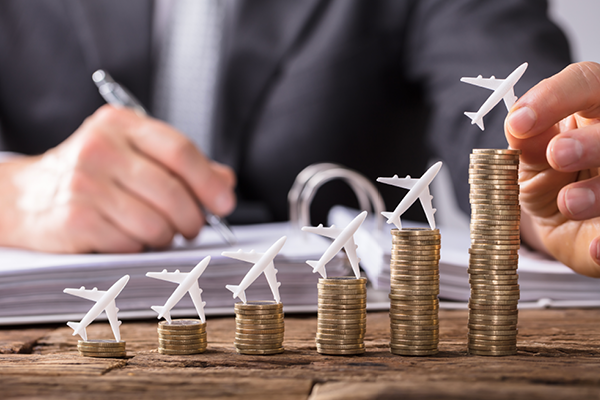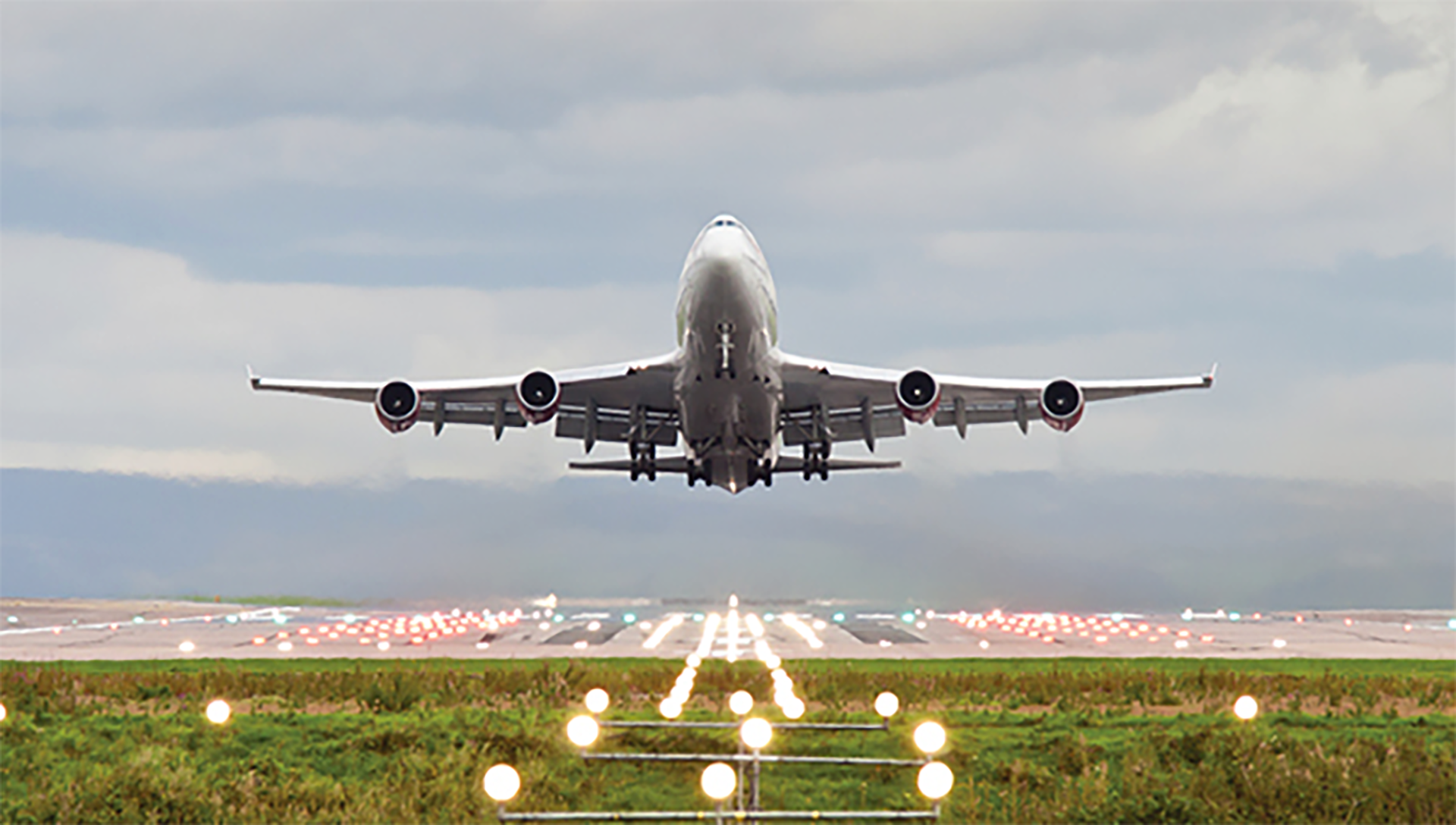Airspace Q2 2019 – Money management
Air navigation service providers need to invest significantly to handle the growth in air traffic while their business models may be evolving.

The effective implementation of new technologies is vital if air navigation service providers (ANSPs) are to safely and efficiently accommodate the demand for air services.
New technologies and their associated new operational and business process have a powerful role to play in transforming ATM performance but funding the necessary investments may not be straightforward.
“States have a vital role to play,” says Jeff Poole, CANSO Director General. “Alongside implementing the ICAO Aviation System Block Upgrades, it is the role of States to ensure that adequate finance is available to invest in modern, efficient air traffic management (ATM) infrastructure that can manage increasing demand.”
Effective ATM requires long-term planning and stability but the necessary investments in ATM are often underfunded due to the many competing priorities for government budgets and the danger of across-the-board government budget cuts.
“It does not help that ATM is the invisible part of the aviation value chain so not always an obvious political priority compared with very visible airports and airlines,” he adds. “Some States also struggle to keep pace with traffic growth because of their often lengthy, bureaucratic and costly procurement processes for new systems and equipment.”
Commercial view
This is far from asking for a government handout, however. Some governments have perceived some inefficiencies in existing organisational structures and have opened up air traffic services to competition. Examples are in Switzerland, where regional aerodrome services have been put on the market, and in the UK, where DFS provides services at London Gatwick and Edinburgh through its subsidiary.
Some ANSPs such as NATS n the UK and ENAV in Italy have seized the initiative. They have already undergone a corporatisation process to enable them to take a commercial view of their operations.
Indeed, in the opinion of Maja Marciniak-Cork, Senior Consultant at aviation consultancy, Helios, “these days ANSPs are expected to manage their investment portfolio independently of governmental investment decisions.”
skyguide, for example, is looking to form a joint venture with ACR to supply regional services in Switzerland. And in Sweden, LFV formed a joint venture with SAAB to provide air navigation services through the use of smart tower technology.
Smart towers are another indicator of an evolving environment and are part of a swathe of digitisation initiatives, with system-wide information management (SWIM) being another example. These developments not only make the skies safer but cheaper to service too. This lower cost of entry means investments need not be so sizeable.
“Remote towers and automatic dependent surveillance – broadcast (ADS-B) infrastructure offer alternatives to the traditional investments, but the bulk of ANSP investment cost is still in their en-route ACC systems,” Marciniak-Cork suggests. “These are still very costly.”
“In an ideal world, digitisation will reduce ANS investment costs by enabling a more open architecture,” she continues. “But having said that we are still a long time away from making that happen.”
She also warns that, in the past, pressure to reduce costs has led to ANSPs under-investing. There is now an urgent need to invest in systems that can provide capacity to resolve bottlenecks in the system. Not all of the required investments are yet identified, and it is important that the regulatory process – particularly during the third reference period (RP3) of the Single European Sky Performance Scheme – is flexible enough to accommodate new initiatives.
Holistic view
Marciniak-Cork agrees that this suggests governmental funding is still required to help solve investment delays. “Considerable public funding has been made available in the past but there may still be a need for further funding to support new investment initiatives,” she says. “This could be done on the basis of a strong business case, showing that the investments will have a strong impact on operational efficiency, reducing delays and enabling shorter, more direct routes.”
CANSO is helping with these business cases by raising awareness of the important role that ATM plays in increasing connectivity, enhancing capacity, improving airspace efficiency and ultimately delivering economic benefits worldwide.
“CANSO wants to ensure that all stakeholders, including States, regulators, airlines, airports and manufacturers understand the need for, and support investment in, ATM,” says Poole. “It is vital that all work together; there is no point in having modern efficient airports and airlines without modern ATM to improve capacity and performance.”
CANSO is involved in both the ICAO Industry High Level Group and the Air Transport Action Group to promote the benefits of aviation to governments around the world and the importance of States investing in infrastructure.
CANSO is also encouraging States to develop more robust ATM implementation plans to guide funding priorities. The aim is to instil the need for long-term planning and put ATM on an equal footing with other transport modes.
Finally, much of CANSO’s work is geared at developing a holistic view of ATM. Governments need to understand the importance of air traffic flow management and regional airspace initiatives, rather than just operating within national boundaries.
Though infrastructure will be predominantly planned and procured on a national basis, this does not necessarily create fragmented airspace, which tends to come about through a lack of procedural and system interoperability. This creates cost inefficiency as, for example, radar coverage and operations are often not optimised across national borders. Moreover, through alliances and other working relationships, ANSPs are increasingly making regional decisions on new system investments.
“CANSO Members have an important role to play in advocating for investment in ATM with their own governments, supported by aviation stakeholders,” concludes Poole. “We must ensure that the ATM industry is able to advocate with strong business cases for investment in infrastructure if aviation is to continue to grow safely and efficiently.”
AirNav Indonesia invests
State-owned AirNav Indonesia is investing Rp 2.6 trillion to improve air navigation services. The company’s 2018 revenues are the main source for the 2019 investments. In 2018, AirNav recorded a Rp 320 billion net profit and Rp 3.2 trillion in revenues.
All 290 Indonesian airports will benefit. Software and equipment will be upgraded, and new towers and other support facilities built.
AirNav plans to invest Rp 1.1 trillion – 44% of the total investment – in automation. This will be especially important at major gateways, including Soekarno-Hatta International Airport in Jakarta, Bali and Surabaya (East Java).
AirNav also invested Rp 1.9 trillion in 2018 as it strives to cope with the increase in air traffic growth. In 2018, there were 2.4 million aircraft movements, up from 2.2 million in 2017 and 1.8 million in 2016.



